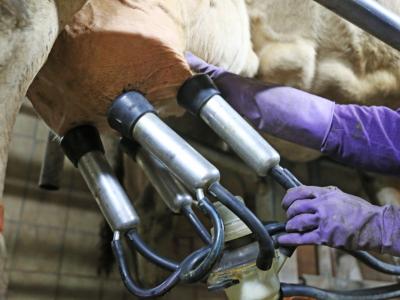May 14, 2008 (CIDRAP News) The US Department of Labor (DOL) yesterday released proposed guidance on stockpiling respirators and facemasks in the workplace, which encourages employers to stockpile the items because of the likelihood that they will run short during an influenza pandemic.
The document, issued by the Occupational Health and Safety Administration (OSHA), offers tips on estimating the needed quantity and resulting costs of the equipment on the basis of employees' exposure risks. The DOL said it is seeking public comment on the proposed guidance. Instructions for submitting comments appeared in the Federal Register on May 9; the deadline is July 8, 2008.
In February 2007, the DOL and the Department of Health and Human Services issued guidance on preparing workplaces for an influenza pandemic. The DOL, in its report yesterday, said it would publish a final version of its stockpiling guidance as an appendix to the earlier recommendations.
The proposed stockpiling recommendations use the same four-level workplace risk pyramid that appears in the broader pandemic planning recommendations. For example, healthcare employees who perform aerosol-generating procedures would be classified as having a "very high" risk, while an office employee who has little contact with the public would fall into the "lower exposure" risk category. (OSHA does not recommend masks and respirators for lower-exposure work environments.)
Surgical face masks protect wearers from hazards such as splashes of large droplets of blood or bodily fluids and also trap large respiratory droplets expelled by the wearer, the OSHA document notes. They are inexpensive and typically fit fairly loosely. In contrast, respirators are thicker masks that are designed to fit tightly to the face and block small airborne particles. They must be specially fitted for the wearer.
The draft guidance describes the capabilities and limitations of each type of protection and lists a range of respirator options, including pros and cons for each type. For example, OSHA advises employers who plan on supplying employees with respiratory protection throughout a pandemic to consider reusable respirators.
OSHA includes rough cost estimates for each type of equipment, which range from up to 20 cents per mask to as much as $1,200 for a powered air-purifying respirator.
Ideally, employees' exposure risk should be estimated as part of a workplace pandemic flu plan, OHSA recommends. Employers also should estimate the number of employees who fall into each risk level.
Recognizing that uncertainty about the pandemic severity is a challenge for pandemic planners, OSHA recommends using a few assumptions to ease the setting of stockpiling goals:
- Community mitigation efforts would reduce illness rates in communities to about 15%.
- Receiving a pandemic vaccine would not modify an employee's need for a mask or respirator.
- The equipment will be used only during local pandemic waves and during work tasks that might expose employees to people who might be ill.
The proposed guidance lists stockpiling estimates for individual employees in a range of medium- to high-risk jobs, listing numbers of masks or respirators by work shift and a theoretical pandemic duration (about 120 work days). For example, a retail-store employee might need two masks per shift and 240 for the duration of a pandemic, whereas a nurse in an outpatient clinic might need four N95 respirators per shift and 480 to cover the whole pandemic.
For healthcare workers who have a very high exposure risk, OSHA recommends that in setting stockpiling goals, employers consider the number of daily aerosol-generating procedures each employee might assist with.
Finally, OSHA advises healthcare employers to factor masks for patients with flu-like illnesses into stockpiling plans to contain the virus and protect employees.
See also:
OSHA's proposed guidance on workplace stockpiling of respirators and facemasks
Request for comments instructions and link
Feb 8, 2007, CIDRAP News story "New OSHA guidance targets pandemic flu"





















